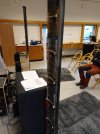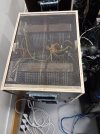In terms of the clipping that's talked about in this thread.Late to this thread, but I have a question about clipping.
Can software detect and prevent clipping? I sometimes use HQPlayer and the volume control will go "red" to indicate clipping - I actually dont here any distortion. Can software predict clipping? This is with convolution in play and headroom adjustment.
Roon has a similar clipping indicator.
I guess that leads to my next question. How do you work out amplifier requirements with DSP/Convolution filters. If I use Acourate to generate a filter <350Hz, I know it puts more stress on the amplifier. How do I work out how much power/current I need in an amplifier in this situation?
Its not as easy as matching speaker and amp specs?
It's difficult to do that in software.
In amplifier design, it's possible to do the clipping detection. Prevention is not possible unless using dynamic compression (which is clipping but soft clip in a sense).
The clipping you are talking about is digital clipping. That can be easily implemented. When software indicates clipping and you don't hear it, it's just that you don't hear it when it's mild. The clipping has happened.
Then to the next question. No you can't. Digital clipping is digital clipping. Analog clipping is analog. The output of your dac will be capped no matter what. Hence the analog devices down the line do not sense the clipping behavior. And this means that you don't need specific headroom in the analog device for digital processing to work.


